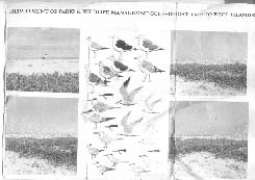
Throughout
2002, MFDC gunmen or suspected MFDC gunmen committed numerous killings. For
example, in March 2002 suspected MFDC insurgents attacked a group of civilian
vehicles 4 kilometers from the town of Diouloulou, near the Gambian border in
the Bignona region of the Casamance and killed seven civilians and wounded four.
In a government military sweep following this attack, the military killed
several suspected MFDC insurgents, although exact figures were not available.
In October 2002 suspected MFDC gunmen opened fire on a taxi in Diabang killing
three civilian passengers. Military authorities in the Casamance region made an
effort during 2002 to reduce the number of human rights abuses committed by
security forces under their command, and human rights NGOs confirmed that there
were significantly fewer complaints of arbitrary arrests, lengthy detention,
and abuse during detention; however, there were no statistics available at
year’s end. At times, usually during sweeps for MFDC rebels, the security
forces temporarily restricted access to the Casamance region or areas within
it. The security forces also regularly maintained checkpoints in the Ziguinchor
region to screen for MFDC rebels and arms transports. Security forces generally
allowed travelers to proceed after checking documents and searching vehicles.
According
to the U.N. High Commissioner for Refugees (UNHCR), during the first 2 weeks of
May 2002, approximately 2,000 civilians fled the country to the Gambia
following clashes between government security forces and MFDC rebels in the
Bignona area of northwestern Casamance. The UNHCR reported that 70 percent of
these refugees returned to their villages by early June 2002. The numbers of
refugees outside the country fluctuated according to the level of violence in
the Casamance region; at year’s end, it was estimated that several thousand
refugees remained outside the country, mostly in the Gambia and Guinea-Bissau.
A UNHCR census in January 2002 counted 7,000 Senegalese refugees living in the
north of Guinea-Bissau.
As
of 2002 Secretary-general of the MFDC Augustin Diamacoune Senghor was estimated
to have some 2,300 troops under his command.
On
26 May 2003 separatist rebels in Casamance announced the death of Sidi Badji, a
hardline leader who had held out against any compromise with the government on
Dakar. The Movement of Democratic Forces of Casamance (MFDC) has confirmed the
death of Badji at the age of about 83. Despite his advancing years, Badji had
remained, at least nominally, the head of the MFDC’s military wing and
commander-in-chief of its guerrilla army. Badji and his supporters opposed the
softer line taken by MFDC’s veteran President, Augustin Diamacoune Senghor, a
Roman Catholic priest who had shown a willingness to settle for a modest degree
of autonomy for Casamance. Over the past two years there had been a concerted
campaign by local non-governmental organisations and other would-be peacemakers
to improve relations between Diamacoune and Badji and to send an unequivocal
message of peace to MFDC combatants in the bush.
For
the first time in a number of years, by January 2004 there were reasonable
expectations for peace in the Casamance, as a result of calls for peace from
MFDC members at their annual conference in October 2003. The Government of
Senegal and one of the three armed groups agreed to a timeline for pacifying
the northern part of the Casamance between Gambia and the city of Ziguinchor.
The government is also accelerating efforts to re-establish “normal” economic
and social life to provide an alternative to the rebellion. In addition to the
prolonged insurgency, armed bandits and landmines present a threat in rural
areas.
Up
to 15,000 displaced people awere expected to return to their home villages in
Senegal’s southern Casamance province during 2004 as a low-level insurgency
that had gone on for two decades petered out, but little was being done by the
international community to assist them. In January 2004 Refugees International
said over 50,000 people had been displaced from their homes as a result of a
rebellion by separatist guerillas in the narrrow strip of swampy forested land
bounded to the north by Gambia and to the south by Guinea-Bissau. Refugees
International said in a statement that the Association of Young Farmers in
Casamance (AJAC APREN) expected 10,000 to 15,000 displaced people to return to
their home villages in 2004.
To
be continued…………
By:
Saidina Alieu Jarjou
Blogger/
Activist
www.jarjou.blogspot.com
Read Other Articles In Article (Archive)




